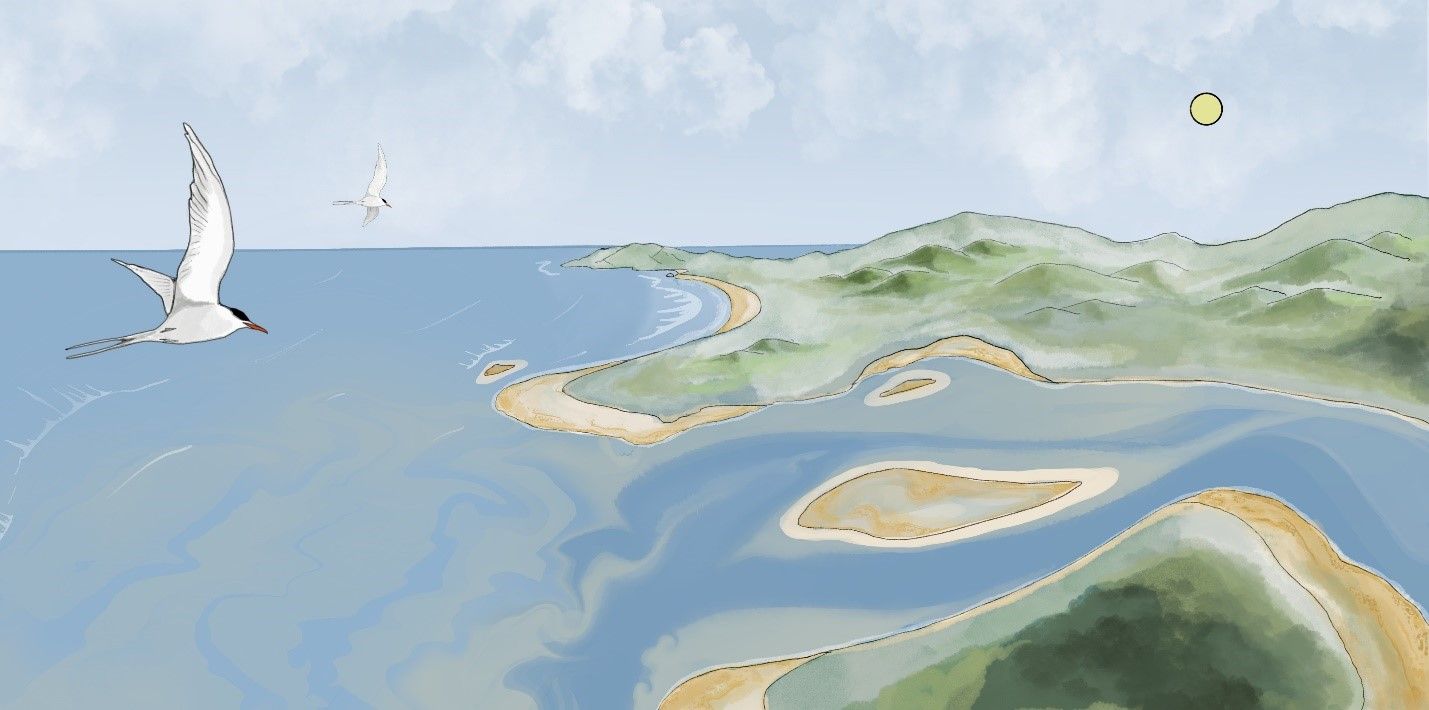Water is considered freshwater when salinity is less than 1,000 ppm (parts per million), or 1 ppth (parts per thousand). Water is considered very high salinity at 10,000 ppm – 35,000 ppm (10 – 35 ppth), with ocean water usually at about 35,000 ppm (35 ppth).
What is it?
Salinity measures the saltiness of water. Specifically, it refers to the sum of all ions dissolved in water. Ions are atoms or molecules with a positive or negative electrical charge. The chloride ion is often used as an indication of salinity, but other ions also affect salinity, such as calcium, magnesium, sodium, potassium, carbonate and bicarbonate.

Estuaries are places where freshwater streams and rivers enter the ocean, causing mixing of freshwater and saline (salty) marine water.
Why does it matter?
Fish and bugs that live in freshwater cannot tolerate large increases in salinity because they are not adapted to saline (salty) water, like marine fish. If the salinity of freshwater becomes too high, it can cause fish die-offs or make the water unsafe to drink. High salinity in water is costly and energy intensive to remove with treatment.
Salinity levels can change in freshwater for many reasons. For example, when people use road salts in the winter, this salt can get washed away into nearby waterways, raising salinity levels. Hot weather can also increase salinity in freshwater. This is because higher temperatures cause water to evaporate, but the ions that contribute to salinity remain in the waterbody. If there is no rainfall or other inflow of water, the water becomes more saline. Land clearing and disturbance, and agricultural practices, including irrigation, can result in more salinity entering surface waters.

Road salts can make their way into waterways during rainfall events and snow melts, contributing to increased salinity levels in the water.
How is it measured?
Salinity is typically measured directly in the water using a submersible sensor, and is often reported as ‘parts per million’ (ppm) or ‘parts per thousand’ (ppth).
In lakes, salinity may change based on the depth of the water. Salty water is more dense than freshwater so the bottom layer of a lake may have higher salinity levels than the top. For this reason, it is a good idea to measure salinity at multiple depths.
Salinity influences: Conductivity.
Salinity is influenced by: calcium, magnesium, potassium, sodium, chloride, bicarbonate, carbonate, sulfate, total dissolved solids.
Related to salinity: Total dissolved solids.